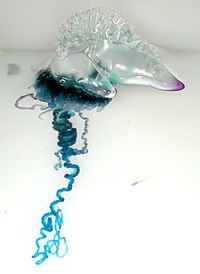
Photo from wikipedia
Semi-supervised node classification with Graph Convolutional Network (GCN) is an attractive topic in social media analysis and applications. Recent studies show that GCN-based classification methods can facilitate the accuracy increase… Click to show full abstract
Semi-supervised node classification with Graph Convolutional Network (GCN) is an attractive topic in social media analysis and applications. Recent studies show that GCN-based classification methods can facilitate the accuracy increase of learning algorithms. However, most of the existing methods do not conduct adequate explorations of the complementary information within the topology structure. Besides, they also suffer from the insufficient excavation of useful information among nodes and the scarcity of labeled samples, resulting in undesired classification performance. To cope with these issues, this paper proposes a contrastive GCN-based framework to jointly leverage the topology graph and the self-adaptive topology graph with feature information in semi-supervised information. In order to extract more valid potential information in the topology graph and increase the flexibility of the framework, we learn an adjacency matrix supervised by a flexible loss that exploits node embeddings to reinforce the topological representation capability of the adjacency matrix. To maximize the homogeneity of these two distinct graphs, we design an improved semi-supervised contrastive loss. In order to enrich scarce label information, we propose a self-supervised mechanism to generate reliable pseudo labels from abundant unlabeled data, which further refines the learnable adjacency matrix. With these modules, both unlabeled and labeled samples jointly furnish the supervision signals, thereby improving the accuracy of the proposed model. Extensive experimental results on real-world datasets demonstrate the effectiveness and superiority of the proposed algorithm against state-of-the-arts.
Journal Title: IEEE Transactions on Signal Processing
Year Published: 2023
Link to full text (if available)
Share on Social Media: Sign Up to like & get
recommendations!